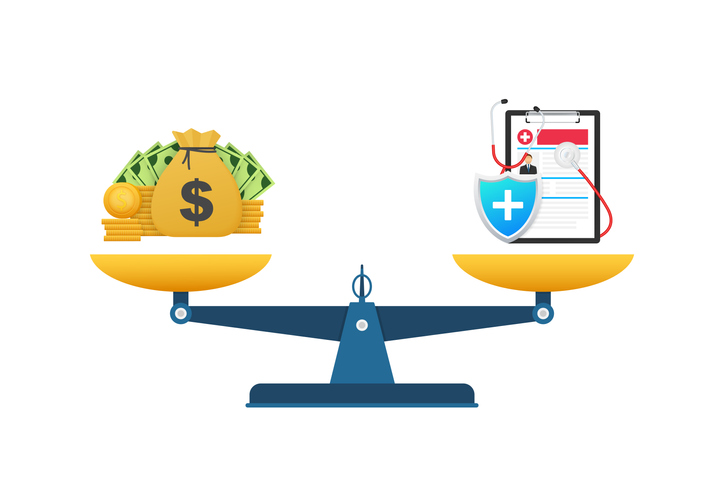
It’s no surprise that Americans continue to press for transparency for their healthcare costs, especially as many struggle to find affordable and accessible treatment options.
And why shouldn’t they? In this country, our biggest systems work best when the default expectation is transparency— from our criminal justice system, to our publicly traded companies and our elections, it is essential in their functionality that the general public is privy to as much information as they can reasonably be entitled to.

With the Rise of AI, What IP Disputes in Healthcare Are Likely to Emerge?
Munck Wilson Mandala Partner Greg Howison shared his perspective on some of the legal ramifications around AI, IP, connected devices and the data they generate, in response to emailed questions.
There are common-sense restrictions: who you vote for is private, and corporations shouldn’t give up their proprietary “secret sauce,” but the expectation is that the public should have visibility into the institutions that shape their lives.
So when we look at healthcare, it is time to acknowledge legislative transparency efforts are hitting a wall, and identify what else we have in our toolbox to achieve this noble goal.
It’s time for leaders to embrace tech-enabled, collaborative approaches
Healthcare spending topped $4.3 trillion in 2021, and is projected to rise to $6.8 trillion by 2030, according to projections from the Centers for Medicare and Medicaid Services.
As prices continue to rise, policymakers and health industry leaders must pave the way for new, transformative technologies to achieve greater transparency and collaboration across the healthcare system. So far, the current laws on the books around drug price transparency are limited in who is required to share data and how, creating gaps in which prices consumers can see.
An analysis by the University of Southern California’s Leonard D. Schaeffer Center for Health Policy and Economics examined 166 recently enacted drug pricing laws and found that the majority of legislation with a transparency component was written narrowly and did not require all stakeholders to share pricing data.
The researchers concluded that these laws have limited impact and do not provide complete transparency throughout the distribution system, despite the “enormous resources spent to enact them.”
Hospitals, who have recently faced new transparency rules from CMS, are operating in a “flawed system” according to a MedCity News article. One study shows fewer than six percent of hospitals have been able to be fully compliant with new price transparency rules. Many hospitals simply do not have the technological infrastructure to meet the demands.
In order to bridge these shortfalls, healthcare organizations can turn to innovative technologies that can make complex data sets more manageable and build trust off of a shared digital foundation.
A blueprint for increasing transparency is already coming into focus in the 340B drug pricing program, where some stakeholder groups are seeing the benefit and gaining clarity from working with a shared data set and openly collaborating more.
Working together to encourage greater visibility
Utilizing technology can simplify the process and encourage collaboration across all parties, from drug manufacturers to hospitals.
Lawmakers should consider legislation that provides more comprehensive transparency across health sectors while simultaneously allowing for technological innovations that can simplify data sharing for stakeholders. Equitable and multisided platforms facilitate an environment where all parties are on equal footing and can seamlessly share data, ensuring that laws are effectively implemented and working as intended.
While all transparency legislation should incentivize more widespread sharing of pricing data, we should be sure to allow for common sense restrictions. Protected health information (PHI) must continue to be aggressively guarded by all stakeholders and technology partners.
Any new legislation should also protect stakeholders from incurring any retaliatory consequences once all information is out in the open. For example, safety-net health providers who utilize the 340B drug pricing program should not face reimbursement discrimination from payers.
Holistic solutions for transparency in healthcare costs and drug pricing should create the accessibility to key information that Americans have come to expect for the institutions they depend on. Fostering technological solutions that can connect individuals to key data must be a foundational part of this approach. By making space for new technologies, we open the door to systemic changes for the better.
Staying a step ahead
As our technology and healthcare needs continue to evolve, it is imperative that any solutions for transparency we enact today be flexible enough to handle the challenges of tomorrow. Many facets of the healthcare system are siloed and don’t account for how to easily share information across multiple platforms and sectors.
By simplifying the process and facilitating collaboration, we can improve broad transparency across the healthcare system and identify solutions that can help meaningfully address rising healthcare costs.
We can deliver the reasonable transparency that Americans deserve.
For lawmakers, that means passing legislation that can create equitable and systemic visibility. For those in healthcare tech, it means creating technology ecosystems that work with shared data to bring all stakeholders to the table.
Photo: Oleksandr Hruts, Getty Images
Brent Dover is CEO of health tech platform company Kalderos. He previously served as CEO of Commure.














